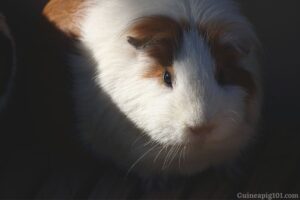17 Plants that are Poisonous for Guinea Pigs
Here’s a quick rundown of 17 plants that are regularly seen in our yard that may pose a threat to our guinea pigs.
Table of Contents
Sweet Alyssum
:max_bytes(150000):strip_icc():format(webp)/how-to-grow-sweet-alyssum-1402862-13-9732fee8347242c496425f14e024aea4.jpg)
Alyssum is a beautiful flowering plant that produces flowery blossoms. The Greek term “Alyssos” is where the English word “Alyssos” originates from. The name “Alyssos” comes from the Greek phrase “treatment of madness.”
The blooms of the alyssum plant are edible and may be eaten. They have a taste that is both sweet and spicy to them. They blossom in the summer, fall, and winter seasons respectively.
Both annual and perennial blooming plants can be classified as alyssum. They feature dainty flowers that range in color from lilac to pink to purple, all of which are white. The stalks on their heads can grow up to a height of one foot.
They are beneficial due to the presence of essential nutrients, which not only aid in the prevention of renal illness but are also utilized in the treatment of edema and ascites. They also have a diuretic effect, which means they stop the body from retaining an unhealthy amount of water.
But, because to the risk of allergic responses, guinea pigs should not be exposed to this helpful plant. It might prove fatal. Moreover, they have the potential to cause skin irritation, nausea, and difficulty breathing in guinea pigs.
Crown of Thorns
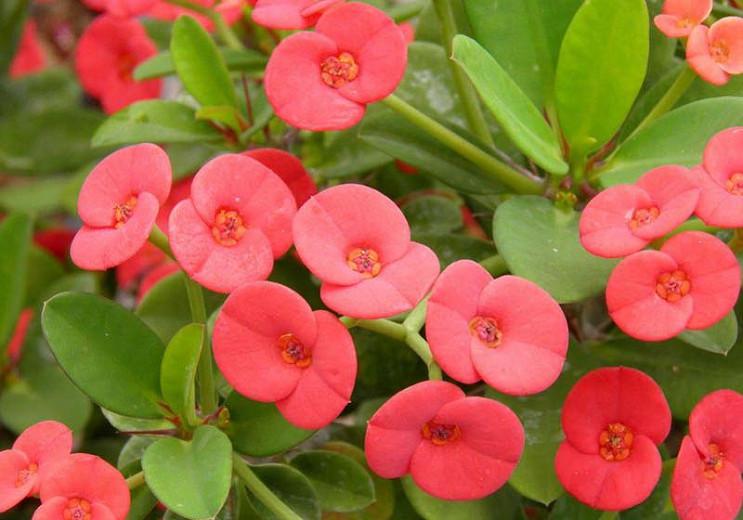
Euphoria milii is the term that botanists use to refer to the crown of thorns plant. It is a plant that resembles a cactus and is native to the island of Madagascar. They are similar to cacti in appearance, since they are both woody and succulent.
It sprouts emerald-green leaves, blooms whose bracts are various shades of red, yellow, and orange, and horns that are thick and pointedly black. It uses its horns to protect the water-storing branches and stems of the plant from the elements.
It is also known as the Christ plant due to the notion that the crown of thorns that Jesus Christ wore was created from the stems of this plant. This belief led to the plant being given both names.
It is generally agreed that the crown of thorns makes an excellent houseplant. However, you should exercise extreme caution if you decide to cultivate them in your home because both people and guinea pigs can be killed by eating them.
These plants contain a white milky sap that generates latex. Latex can cause sneezing, wheezing, breathing problems, and irritating ingestion, leading to gastrointestinal issues.
The Crown of thorns also has a toxic chemical present in it, which is known as Phorbol esters. It contains carcinogenic properties in them which contribute to tumor generation in guinea pigs body. Always keep your guinea pigs away from the crown of thorns
Shirley Poppy
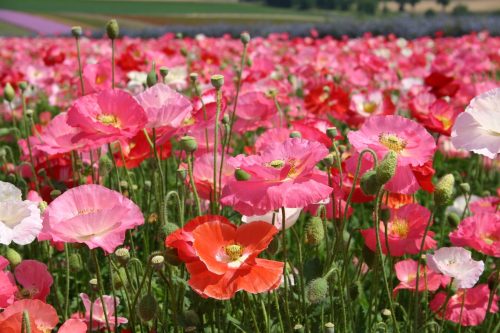
The name “Papaver rhoeas” can also be used to refer to the “Shirley poppy.” It gets its name from a neighborhood in Croydon, which is located in Surrey, which is one of the boroughs that make up Greater London.
The Shirley poppy is a kind of annual flower that is a member of the family of poppies. Flowers grown in gardens include Shirley poppies. They may reach a height of three feet. Its blossoms may reach heights of two to four inches in diameter. The stems of Shirley poppies are always straight, and they cannot tolerate high temperatures.
Shirley poppies are the type of poppy that may grow in a garden. They offer a variety of advantages to human health in a variety of ways. They are helpful for conditions such as difficulty breathing, coughing, and colds, as well as sleep disorders and discomfort.
Even though they have some positive applications in the natural world, they pose a threat to the health of your guinea pigs. Rhoeadine alkaloids are present in this substance. The alkaloids that are contained in the flower can give your guinea pigs symptoms such as diarrhea, inhibition of bone marrow, and aberrant behavior in the liver.
In addition to these symptoms, ingestion of this plant also leads to restlessness and nausea.
It is strongly advised that you keep your guinea pigs away from this plant in order to ensure their safety.
If you cultivate this plant, you should constantly remember to improve it in an area where your guinea pigs are not allowed to go since guinea pigs are drawn to new hay and flowers. This plant should be improved in an area where your guinea pigs are not allowed to go.
Ageratum

Ageratum is the kind of ageratum that is most commonly found as a plant. Ageratum houstonianum is the term given to them in the scientific community. They were born and raised in Mexico.
Ageratum is most well-known for the quirky pompom-shaped blooms that are blue in color. But, in addition to blue, they may also be found in a variety of other hues such as white, pink, lavender, and red.
Their period of flowering extends from April through the winter months. They may attain a height of up to thirty-six inches and a width of between six and eight inches as they mature.
Because they include some poisonous components, they are harmful to our guinea pigs and should be avoided at all costs. It is composed of pyrrolizidine alkaloids to a certain extent. Your guinea pigs are at danger for developing lung illness and liver cancer as a result of the presence of pyrrolizidine alkaloids, which are the agents responsible for liver damage.
Keep your guinea pigs away from this plant at all times, even while they are free to explore the rest of the garden.
Strawflower

Strawflowers belong to the family Gnaphalieae and are considered to be annual flowers. These blossoms are known by a variety of names, including paper daisy, golden everlasting, everlasting flower, and everlasting daisy.
The bracts of strawflowers have a texture similar to that of petals and are quite crisp. The size of their florets is proportional to that of their bracts. Its maximum length is around one centimeter. They are indigenous people from Australia.
They are available in many different hues, including orange, pink, purple, white, and yellow, among others. Guinea pigs can get an allergic dermatitis from strawberries, and guinea pigs themselves can be allergic to strawberries.
Lantana
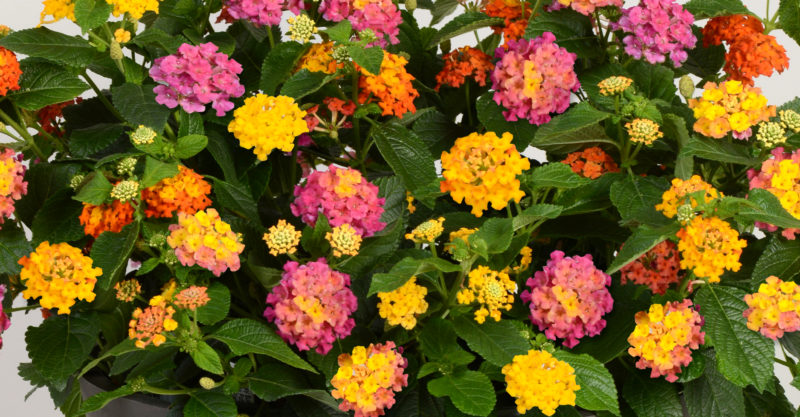
Lantana is a beautiful plant, especially because of the vines it produces. They are referred to as shrubs in common parlance. Both in the ground and in containers, lantana may be cultivated successfully. These are the tropical annual flowers that are endemic to the tropical regions of America and Africa.
It has the potential to be six feet in length and eight feet across at its widest point. They come in a variety of colors, including blue, red, orange, yellow, and white. Lantana is a beautiful plant since it is made up of blossoms that are gathered together in a sphere to give it that appearance.
Due to the presence of harmful substances, these gorgeous plants should not come into contact with guinea pigs at any time. Irritability, problems with the respiratory system, diarrhea, and a range of other health problems can be brought on by lantana.
The pursuit of food is a favorite activity of guinea pigs. If you want to allow your guinea pigs out to forage, make sure you keep a tight eye on them to ensure that they don’t stray too close to this potentially lethal plant.
Potato leaves

Potatoes are a delectable underground vegetable that may be eaten. They have a high nutritional content and a flavor that appeals to humans, thus they are consumed as food.
The leaves of the potato plant are edible. These are quite enjoyable. The leaves of the potato are an excellent source of vitamins C and A, in addition to folic acid and other minerals.
They have the appropriate quantity of nutrients, but our guinea pigs cannot consume them since they contain a toxin that is harmful to them.
Potato leaves are a source of the amino acid solanine. Symptoms of solanine poisoning include but are not limited to nausea, diarrhea, drowsiness, and problems with the respiratory system.
Pot Marigold

There are a few other names for the Pot Marigold, including Ruddles, Common Marigold, and Scotch Marigold. It’s a flowering plant, if you will. Perennials that grow from herbaceous roots are what these plants are.
They may grow to be as long as 80 centimeters in length. They are a type of flower that blooms only once a year and thrive in warmer climates. Their stems are hairy all the way through.
Traditional uses of pot marigold include treating skin conditions and promoting overall health.
In addition to these benefits, this plant has some disadvantages for our guinea pigs, as it is toxic to them and can cause them injury. They may also produce a milky sap that irritates our guinea pigs’ skin in addition to causing moderate pain and gastrointestinal troubles.
Geraniums
These are annuals that may also be grown in gardens and used to embellish things like baskets. Geraniums are often cultivated outside in gardens, but they are also capable of being grown well indoors. They hail from the country of South Africa.
Guinea pigs should not come into contact with geraniums at any time. Two of the chemicals that may be found in it are geraniol and linalool. These potentially harmful components might cause skin irritation and diarrhea in guinea pigs, among other adverse effects.
Wax Begonia
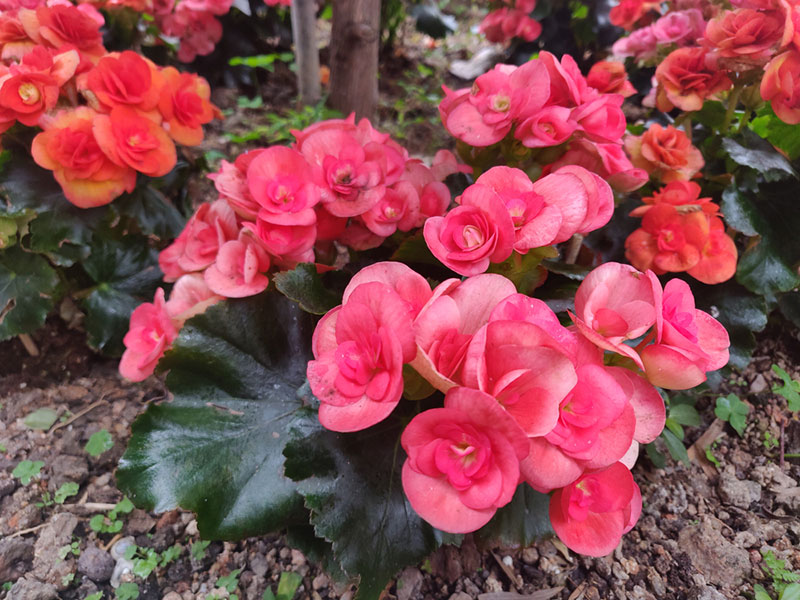
Wax Begonia are types of plants that live for many years. In certain circles, it is also referred to as fibrous begonias. White, pink, and red blooms are the most common color combinations found in this variety.
You may cultivate wax begonias in the yard, or you can grow them in containers within your home. To achieve optimal growth, they must be exposed to an abundance of sunshine, and they favor warm temperatures.
Despite the fact that they are stunning to look at, guinea pigs can be shockingly poisoned by them. After ingesting one of these plants, guinea pigs may experience difficulty swallowing as well as swelling or redness around the mouth area of the animal.
Wormwood
Wormwood is a perennial plant that grows from herbaceous roots. These plants are indigenous to the northern regions of Eurasia, North Africa, Canada, and the United States of America.
It is characterized by fibrous roots, and it may attain a height of between two and three feet. This plant has leaves that have a greenish-gray tint on the upper side and a white color on the underside.
In addition to its usage as a treatment for dyspepsia, wormwood is also employed in the flavoring process for some wines and spirits. Thujone is another component of this plant that may be found here.
Guinea pigs exposed to thujone have a variety of adverse health effects, including deterioration of muscular tissue, failure of the kidneys, agitation, and cramping in the stomach.
If you could thus keep your guinea pigs away from this plant, it would be very much appreciated.
Snapdragon

The opening and closing of the blooms of a snapdragon, from which the plant gets its name, is said to resemble a dragon.
They are indigenous to the continents of North Africa, the United States of America, and Europe. Antirrhinum majus is the name given to it by scientists. The beauty of these blooms is accentuated by their blue coloration. These are plants of a moderate size that have the potential to grow to a length of three feet.
In most instances, safflowers are not harmful to humans. The consumption of this plant by guinea pigs won’t result in any adverse effects, but the plant itself may become problematic if it becomes infected with fungus or viruses.
Guinea pigs run the risk of developing serious health issues if they consume plants that have been contaminated with fungus or viruses and should avoid doing so.
Peppers
The pepper plant is a vining plant with woody stems that grows to great heights. The fruit of this plant, which resembles peppercorns and is used in seasoning and spice blends, has brought it widespread recognition.
Pepper plants that have reached maturity can grow to a height of five millimeters. They hail from a region in Asia.
Guinea pigs must not ingest any part of these plants under any circumstances. Pepper plants contain the species Solanium pseudocapsicum, which is a member of the solanaceous plant family.
Guinea pigs exposed to solanine may have a number of negative side effects, some of which include nausea, diarrhea, stomach cramps, burning in the throat, and a range of other symptoms.
Salvia

The plant known as Salvia, which also goes by the name Salvia Divinorum, is a member of the mint family. Its original habitat includes areas of Southern Mexico, Central America, and South America.
The plant known as salvia is a shrub that is both perennial and fragrant. This particular plant has its stems and leaves arranged in an opposite manner to one another. The stems of this plant are square in shape.
This gorgeous plant may be found in a variety of hues, including white, yellow, blue, and red. The form of their blossoms is similar to a tabular. They have a variety of names for their streets, including-
Diviner’s Sage
- Maria Pastora
- Ska Pastora
- Hierba Maria
- Sally-D
- Magic Mint
- Shepherdess’s Herb
- Leaf o Prophecy
- Lady Salvia
- Lady Sally
- Sage of the Seers
- Purple Sticky
- The Female
- Incense Sticky
When it comes to our guinea pigs, salvia does have some negative side effects. They include hallucinogens, which might result in visual distortions caused by bright lights as well as an overall feeling of unease.
Guinea pigs that are exposed to them might develop a variety of health issues, including vomiting, dizziness, and inability to move.
Catnip
There are a few other names for catnip, including catwort and catmint. They belong to the Lamiaceae family of plants. The scientific name for these plants is Nepeta Cataria. These may be found in China, as well as the southern and eastern parts of Europe, the Middle East, and Central Asia.
The shelf life of catnip is not very long. These are plants that live for many years and are herbaceous. It may grow to be anywhere between twenty and forty inches tall.
They are used to impart flavor to a variety of foods, including sauces, soups, and stews. Catnip leaves are sometimes used in the preparation of herbal drinks. It eases digestive issues as well as cramping in the interstitial tissue. Guinea pigs are susceptible to the side effects of catnip, which include vomiting and headaches.
Cleome

Cleome is a kind of flowering plant that is a member of the Cleomaceae family. There are several other names for the same plant, including spider flower, spider plant, spider weed, and bee plant.
It is a type of flower that only opens its petals once a year. They are a species native to North America. Cleome may grow up to one to five feet tall and one to two feet wide. Its height can range anywhere from one to five feet. Garden settings are the most common location to find them in.
In addition to its use in medicine, cleome is also consumed as a food. Bronchitis treatment and pain relief are only two of the medicinal applications of this substance.
They have a number of negative effects on guinea pigs, one of which is that they have the potential to cause the guinea pig’s stomach to expand.
Globe Thistle

There are a few variations of the term globe thistle, including excellent globe thistle and light globe thistle. The scientific name for this plant is Echinops sphaerocephalus, and it is classified as a member of the sunflower family.
Thistle globe is a perennial plant that grows from herbaceous perennial stems. It may grow to be anywhere between twenty and forty inches tall. It features stems that are wrinkly, hairy, and gray in color. The leaves are pointed and velvety, and the color of the foliage is green.
Its blooms have a sharp appearance and can remain in bloom for up to eight weeks. They bloom throughout the summer and come in a variety of hues, including blue, purple, and white.
Guinea pigs should not come into contact with the poisons that are contained in this plant. It is possible for guinea pigs to have health issues as a consequence of them. They have the potential to alter the urinary tract, which can result in abdominal discomfort, diarrhea, renal complications, bladder stones, and other urinary symptoms.
Guinea Pig ate Poisonous Plant
The pursuit of food is a favorite activity of guinea pigs. They are putting themselves in grave danger and are at risk of passing away if they consume any deadly plants while they are foraging.
If you observe any weird behavior or evidence that your pet may have been poisoned, you should immediately contact your veterinarian or take them to a veterinary clinic.
Let the veterinarian to do a comprehensive examination on your guinea pig in order to identify the cause of the poisoning; alternatively, if you are aware of a poisonous plant, contact the veterinarian so that treatment may start as soon as possible.
Always be sure to give your guinea pigs all of the medication that has been given by the veterinarian after they have through all of the required checkups.
Signs of Guinea Pig Poisoning
- When a guinea pig consumes a plant that is poisonous to them, their bodies will go through a period of pain.Maintain a vigilant lookout for signs of unease such as these at all times.
Always pay attention to the cues that your guinea pigs give you when they aren’t feeling well. Have a look at these warnings, shall we?
Abdominal discomfort
- Internal hemorrhage
- Bruising on the outside
- Exhibiting melancholy behavior, such as withdrawing from you
- Bloating
- Diarrhea
- Problems with constipation or bowel movement
- Issues with the lungs
- In the mouth, there is redness and swelling.
- Trying to get away from eating
- Heart rate is slow.
- Reduce your body’s temperature
- Unconsciousness
- Weakness
You need to get in touch with a qualified veterinarian as soon as possible if you suffer any of these symptoms.


